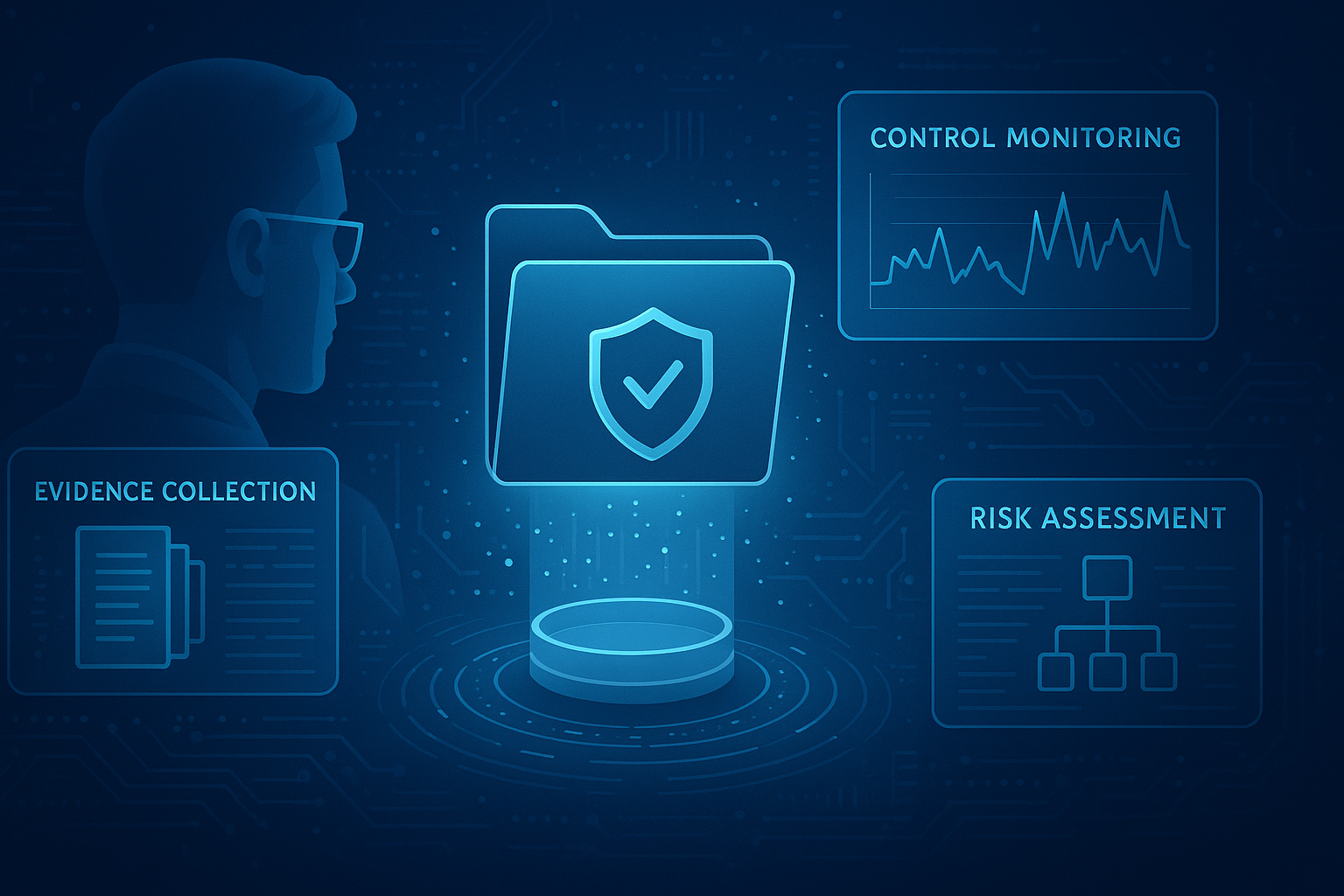In recent years, the use of integrated risk management (IRM) as a methodology has become widely adopted to help orchestrate and centralize business continuity and functionality. This comes in light of the realization that traditional governance, risk management, and compliance (GRC) tools are incredibly outdated for the needs of today’s security teams, creating more confusion and complexity in an ever-evolving digital environment where clarity is desperately needed for the longevity and success of an organization. IRM serves to not only alleviate the issues of scalability, real-time risk aggregation, and elevated risk management that frequently are lacking in GRC risk management software offerings but also to centralize the important metrics your organization needs to hyperfocus efforts and streamline cybersecurity initiatives across distributed teams and layers of hierarchy.
The End of the Legacy GRC Era
IRM is defined as ‘practices and processes supported by a risk-aware culture and enabling technologies that improve decision making and performance through an integrated view of how well an organization manages its unique set of risks.'This is a far departure and much-needed improvement over the results of governance, risk, and compliance (GRC) platforms. In a time of inflated expectations of what GRC activities can achieve, the results are that GRC solutions lack the agility, flexibility, and scalability to effectively scale security and large enterprise risk management operations, much less communicate those initiatives in a corporate governance context.
One of the largest issues with GRC software is the inability to manage business objectives and information security KPIs or metrics across multiple functions. Promising principled performance, most traditional GRC activities include a decentralized and confusing combination of modules that serve separate purposes and deliver results independently of one another. Managing data across modules can become tedious, and it can be difficult to cross-reference security KPIs for benchmarking, measuring security goals appropriately, identifying risk areas, and meeting compliance. Simply put, today’s enterprise GRC offerings are far too limited to support the functions of information security programs in modern business.
Integrated risk management (IRM) builds on the ideals of GRC programs while exponentially improving your experience and the current methodologies. IRM goes beyond agile GRC solutions by centralizing, automating, scaling, communicating, and visualizing an organization’s cybersecurity posture across all business processes. In addition, organizations can manage operational risk, monitor threats, and act on real-time gap analyses, resulting in a unified language for information security that can be communicated across multiple teams and departments. This functionality allows for transparency and control for the Chief Information Security Officers (CISO) and their teams. It allows security leaders to direct resources in the most impactful means possible, communicating to business side stakeholders in a way they can understand.
Why Integrated Risk Management Tools Succeed
Based on the research from Gartner research leaders and many others, it’s apparent that IRM solutions will succeed over the modular GRC set of compliance processes in the areas of scalability, real-time data aggregation and insights, the ability to address demands across risk, compliance, legal, audit, and cybersecurity governance, and in IRM solutions’ relevance in the Boardroom.
Scalability
With the ever-increasing regulatory compliance requirements organizations need to maintain and track to prove compliance against industry standards and frameworks, GRC software fails to do so effectively for multiple reasons. As requirements change and new risks emerge within organizations, GRC technology ultimately becomes overly customized and results in the convolution of risk relationships, inconsistent scoring models, and dashboards that only operate statically, failing to support the agility of modern compliance managers and businesses that need to keep up with regulatory change.
IRM, on the other hand, operates continuously and scales over long periods of time and adapts to regulatory change. This functionality enables an organization to scale cybersecurity initiatives with upcoming regulations and save time as new changes roll out in the industry. Additionally, organizations can centralize important information that teams must promptly provide with compliance reports.
Risk Data Aggregation and Communication
GRC management tools are inadequate in aggregating, analyzing, and reporting on risk data across different areas in real-time because of their complex nature in enterprise deployments. Each individual process requires a new workflow to collect data, entirely siloed from other metrics that could impact risk calculation unless customized continuously. Integrated risk management tools are capable of unifying scoring models and data across multiple sections of an organization, and quantifying it all in a digestible way for every stakeholder, from the assessment owner to the CISO or even the Board of Directors.
Relevance in Decision-Making Processes and Business-Side Discussions
GRC tools can cause incredible frustration for even the most seasoned cybersecurity practitioners, much more so when communicating to business-side leaders or boardrooms who need distilled data to make decisions on how to allocate company funding. The static output of GRC tools is oftentimes too complex to become widely understood, and the common fallback to spreadsheets is tempting for many infosec teams and leaders despite the massive investment in GRC systems. Neither spreadsheets nor GRC strategies can distill cybersecurity risk and compliance data in a meaningful way that can be delivered on demand with real-time accuracy.
By presenting and illustrating your cybersecurity posture from an integrated perspective, Boards and business-side stakeholders can get a comprehensive understanding of why your security initiatives are vital to your organization, a clear illustration of return on security investment, and can assist with making informed business decisions based on an understanding of existing and potential cyber risk.
Efficiency Across Multiple Risk Domains
Only IRM has the capability to manage enterprise-wide risks, such as vendor risk management, third-party risk management, IT risk, digital risk, compliance, cloud-based risk, and audit management. With this capability, teams can create workflows across different domains and automate the data collection and control scoring process efficiently. Deploying an IRM solution across all organization functions will also help expedite an internal audit or an external audit, should one occur.
Potential Emerging Threats and Risks
Unlike GRC, which largely operates statically, IRM works dynamically to monitor and assess emerging risks in the cybersecurity landscape. This aligns perfectly with the idea of continuous risk assessments that is embedded into IRM’s core and will assist organizations in maintaining compliance, reducing risk, and building resilience over a long period of time, regardless of the pressures of changing laws and regulations or digital transformation.
Fortunately, adopting an IRM platform like CyberStrong can help your organization prove continuous compliance, effectively address uncertainty, and act with integrity. With executive dashboards, risk management, assessments, Governance Dashboards, and AI-backed threat feeds, CyberStong can help streamline your compliance program across multiple frameworks continuously, saving cybersecurity teams time, energy, and frustration caused by GRC software solutions and spreadsheets.
See how this global manufacturing organization adopted an IRM approach and became CyberStrong
If you have any questions or want to know more about CyberStrong, visit our website, here, or meet with the team.





.png)
.png)
.png)
%201.png)
.png)




